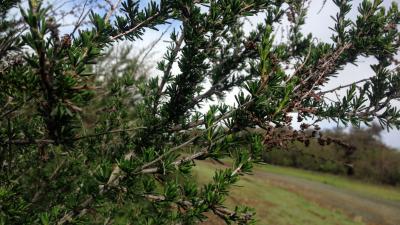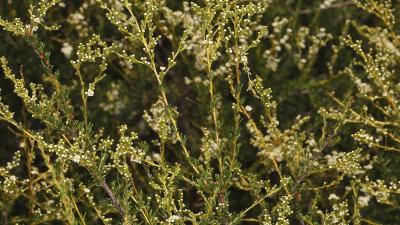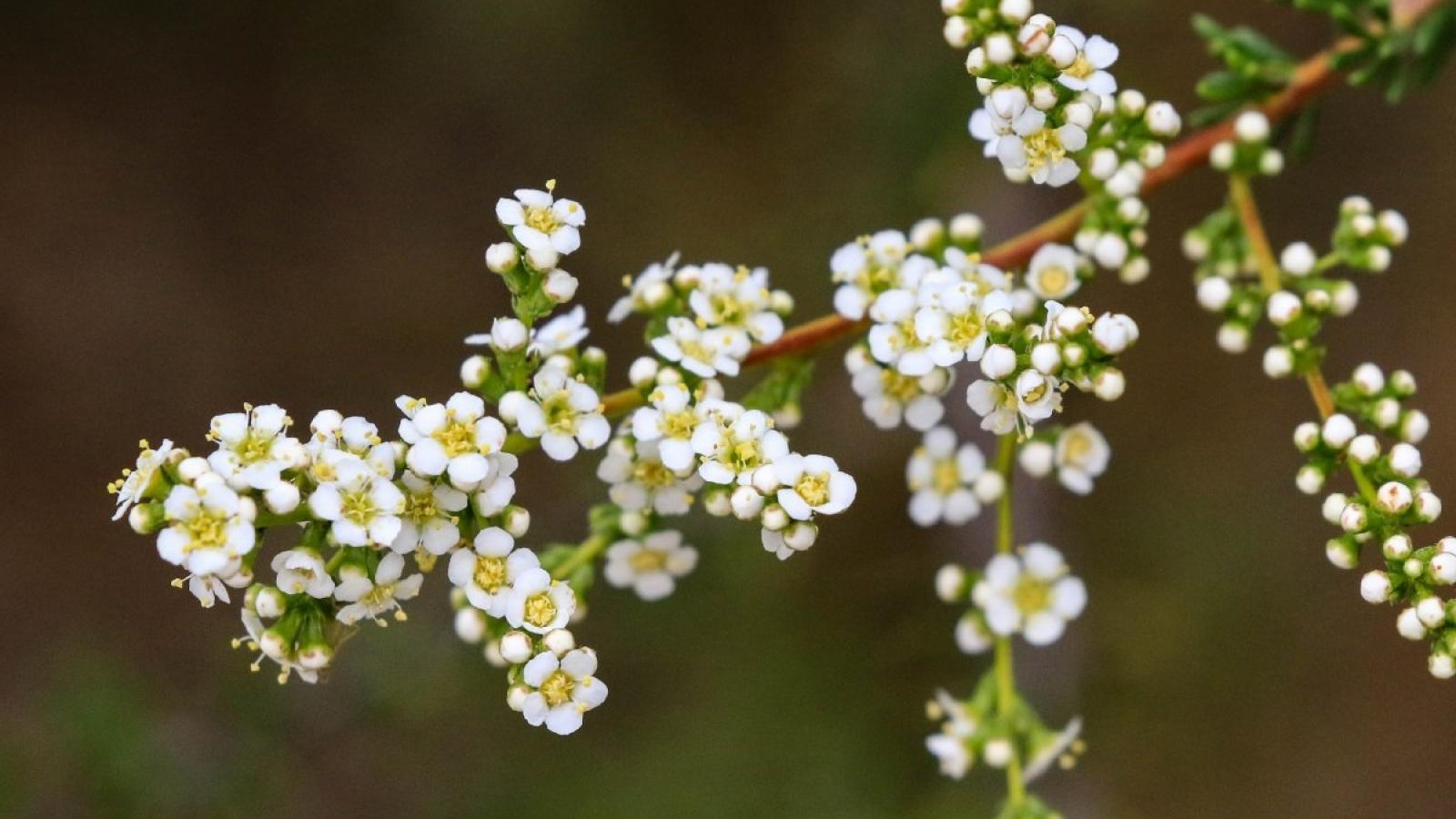Chamise (Adenostoma fasciculatum), also known as greasewood for its oily twigs and leaves, is one of the most widespread and iconic native shrubs in California’s chaparral habitats. The name chamise comes from the Latin word “chamiso” and the Portuguese or Galician word “chamica,” meaning dry brush or firewood.

Like many other native chaparral plants, chamise is particularly drought-tolerant with its large, deep root system and has adapted to survive in nutrient poor soil and on dry, rocky outcroppings.
This species is also well-adapted to wildland fire. Chamise stems sprout from a burl, a thick and tough woody swelling that grows underground, protected from fire by the surrounding soil. After a burn, roots from the burl can continue growing, and the plant can rapidly resprout above ground from the buds protected in the burl. In addition, chamise produces two types of seeds: the first type is able to grow into a new plant without any activation while the second type remains dormant in the soil until it is activated by the heat from wildland fire, producing new growth following a burn.

Chamise has traditionally been used by Indigenous people as a medicinal plant as well as for tools and kindling. The oily twigs and leaves were ground into a powder and added to ointments while medicinal tea was brewed from the bark. Indigenous people also carefully heated chamise wood to harden it and make arrow points.
Blooming period: May to June
Habitat: Chamise is a vital part of the chaparral ecosystem. Its wide-spreading and deeply-penetrating roots allow it to control erosion and anchor slopes. The evergreen plant’s leaves and twigs provide consistent nourishment for mule deer, rabbits and dusky-footed woodrats, particularly in the hot and dry summer months. The shrubby cover also provides hiding places for nesting birds, rabbits, lizards and many other species.
Where to find: Sierra Azul Open Space Preserve (Barrow and Bald Mountain Trails) and Rancho San Antonio Open Space Preserve (Chamise Trail)

